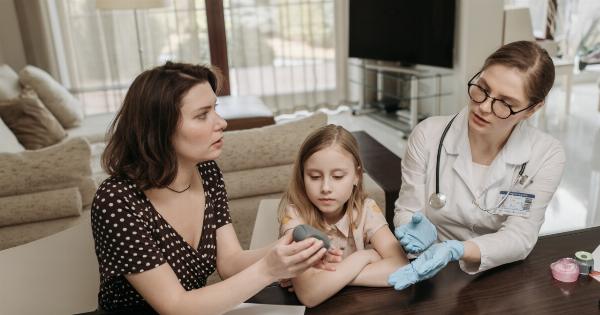Chronic Obstructive Pulmonary Disease (COPD) is a progressive respiratory condition that affects millions of people worldwide.
It is characterized by airflow limitation and persistent respiratory symptoms such as coughing, wheezing, and shortness of breath. COPD is a leading cause of disability and mortality globally, with an estimated 3 million deaths each year. Beyond the respiratory system, COPD has significant effects on cardiovascular health.
The Complex Relationship Between COPD and Heart Health
Although primarily considered a respiratory disease, COPD is often linked to cardiovascular complications.
Studies have identified a strong association between COPD and an increased risk of developing heart diseases, including heart failure, coronary artery disease, and arrhythmias. The underlying mechanisms behind this relationship are complex.
COPD exacerbations, characterized by acute worsening of respiratory symptoms, can trigger systemic inflammation and oxidative stress, which can have detrimental effects on the heart.
The decreased lung function in COPD patients also leads to decreased oxygen supply to the heart, causing additional strain on an already compromised cardiovascular system.
Furthermore, the comorbidities commonly associated with COPD, such as hypertension, diabetes, and obesity, further contribute to the burden on the heart and the overall health of the patients.
It is clear that addressing both respiratory and cardiovascular aspects is crucial for comprehensive COPD management.
Innovative Technology for COPD Patients
With the advancement of medical technology, innovative home devices are now providing hope for COPD patients in improving their heart health.
One such device is the cutting-edge technology developed specifically for pulmonary rehabilitation and cardiac conditioning in the comfort of patients’ homes.
Promoting Pulmonary Rehabilitation
Pulmonary rehabilitation is a cornerstone of COPD management.
It involves a multidisciplinary approach combining exercise training, patient education, nutritional guidance, and psychosocial support to improve functional capacity and enhance quality of life for COPD patients. However, access to pulmonary rehabilitation programs can be limited, especially for patients with mobility issues or living in remote areas.
The innovative home device now offers a solution for patients by bringing pulmonary rehabilitation to their homes.
With the guidance of healthcare professionals, patients can engage in personalized exercise programs tailored to their specific needs and capabilities. The device offers a variety of exercises targeting both respiratory and cardiovascular systems, allowing for efficient and effective workouts.
Studies have shown that home-based pulmonary rehabilitation can be as effective as traditional center-based programs in improving exercise capacity, reducing symptoms, and enhancing patients’ overall well-being.
Additionally, the convenience and accessibility of home-based rehabilitation can significantly increase patient compliance and engagement.
A Holistic Approach to Cardiac Conditioning
Recognizing the close link between COPD and cardiovascular health, the innovative home device also incorporates cardiac conditioning into its functionalities.
Through specialized programs, patients can safely engage in exercises designed to improve their heart health and reduce the risk of cardiovascular complications.
The device continuously monitors patients’ vital signs, including heart rate, blood pressure, and oxygen saturation levels, ensuring personalized workouts that are both effective and safe.
By gradually increasing the intensity and duration of exercises, patients can strengthen their cardiovascular system without overexertion.
Moreover, the device offers real-time feedback and tracking of progress, motivating patients to stay consistent with their daily exercise routines.
This level of engagement and self-monitoring empowers COPD patients to take an active role in their own health management.
Enhancing Quality of Life and Patient Care
The introduction of this innovative home device represents a significant breakthrough in COPD patient care.
By integrating pulmonary rehabilitation and cardiac conditioning into one accessible device, it offers a holistic approach to managing the complex relationship between COPD and heart health.
Patients no longer need to rely solely on center-based programs or face the challenges of transportation and limited access.
The device brings rehabilitation and conditioning directly to their homes, empowering patients to take charge of their health and improve their overall quality of life.
Furthermore, the device’s real-time monitoring and tracking capabilities enable healthcare professionals to remotely assess patients’ progress and adjust their exercise programs accordingly.
This enhances the continuity of care, ensuring that patients receive personalized guidance and support throughout their rehabilitation journey.
The Future of COPD Management
As medical technology continues to advance, the integration of innovative devices in COPD management shows great promise.
These devices not only improve patient outcomes but also reduce healthcare costs by minimizing hospital admissions and emergency visits related to disease exacerbations.
Furthermore, the comprehensive data collected by the device opens new avenues for research and optimizing COPD treatment strategies.
Long-term analysis of patients’ exercise patterns, vital signs, and symptom fluctuations can lead to a better understanding of the disease and the individualized needs of COPD patients.
Conclusion
Innovative home devices are transforming the landscape of COPD management, offering new hope for patients’ heart health.
By combining pulmonary rehabilitation and cardiac conditioning in one accessible device, COPD patients can take control of their own health and experience improved outcomes.
This revolutionary technology not only enhances quality of life but also empowers patients to actively engage in their own care.
With continuous advancements in medical technology, the future of COPD management looks promising, bringing optimism for improved patient outcomes and a better understanding of this complex disease.




























